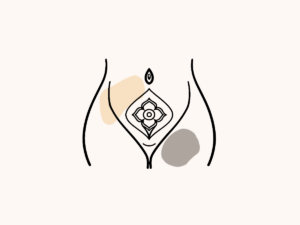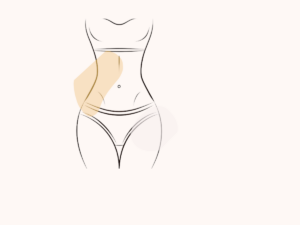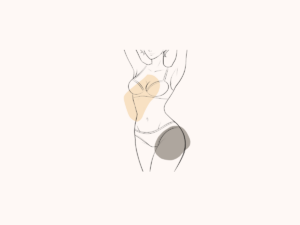
Recovery After Labiaplasty
Table of Contents Introduction Recovering from labiaplasty is as essential as the procedure itself, ensuring optimal results and minimising complications. Dr Mark Kohout, a Sydney-based specialist in plastic surgery with
Recovery is a vital phase of your body lift journey, influencing the final outcome and overall satisfaction with the procedure. This blog offers insights into the recovery process, hrlping you to be well-prepared and informed every step of the way. Sydney-based plastic surgeon Dr Mark Kohout, a highly experienced and accredited professional, is recognised for his patient-centred approach and meticulous care. This guide aims to provide practical advice and realistic expectations to help you achieve the optimal results.
The first 24–48 hours following your body lift are often the most critical. Patients can expect some drowsiness from the anaesthesia, along with mild to moderate discomfort, swelling, and bruising. Dr Kohout’s team will be closely monitoring you during this period, and a personalised aftercare plan is provided before you leave the hospital.
Since mobility may be limited in the early stages, arranging for a trusted friend or family member to assist with daily tasks—such as meal preparation, dressing changes, and transportation—is essential. This support is invaluable during the initial adjustment phase.
A body lift typically involves removing excess skin and tightening underlying tissues, often targeting areas such as the abdomen, thighs, and buttocks. The procedure is tailored to address significant changes in body contour, frequently resulting from substantial weight loss. While this surgery may offer dramatic changes, it also comes with recovery challenges, including managing swelling, limited mobility, and adherence to postoperative instructions.
By weeks three to four, many patients notice a significant reduction in swelling and discomfort. However, it’s important to continue adhering to post-operative care instructions to avoid setbacks.
Most patients feel well enough to return to desk jobs and light physical activities during this period.
Nutritional Support: Eating a nutrient-dense diet helps your body heal effectively. Incorporate plenty of protein, vitamins, and minerals into your meals.
Hydration: Staying hydrated supports skin elasticity and overall recovery.
Clothing: Loose, comfortable clothing and compression garments are recommended to aid healing and reduce irritation.
Avoiding Tobacco: Smoking can impair healing and increase the risk of complications.
Maintaining the desired results from your body lift requires ongoing care and commitment.
Proper preparation can make the recovery process at home, less challenging and more comfortable:
Undergoing a body lift is not just a physical change—it’s also an emotional one.
While a body lift can offer significant changes in body shape, it is essential to understand the potential risks and complications associated with the procedure. Awareness of these possibilities enables patients to make informed decisions and monitor their recovery effectively.
Understanding these risks highlights the importance of choosing a qualified and experienced surgeon like Dr Mark Kohout, who prioritises patient safety and provides thorough postoperative care.
Contact emergency services or seek immediate medical help if you experience:
Prompt communication with Dr Kohout’s team is essential if any concerns arise.
Recovery after a body lift is a gradual process. Most patients feel comfortable resuming light activities within 2–3 weeks,
but full recovery, including the resolution of swelling and scar maturation, may take up to a year or sometimes more.
Driving can typically be resumed after two weeks, once you are no longer taking prescription pain medications and have regained
full mobility and comfortable and confident to operate a vehicle safely. If you feel unsure, it’s always better to wait longer.
Yes, it is common to feel tightness or changes in sensation, such as numbness or tingling, in the treated areas.
These sensations usually improve over time as nerves heal and tissues settle. It is important to note that nerves are very slow healing and patience will be essential.
Avoid heavy lifting, intense exercise, and any activities that strain the surgical areas for at least 6–8 weeks or until cleared by Dr Kohout.
Sun exposure to scars should also be avoided to prevent pigmentation changes.
Scar care includes using silicone gels or sheets, as recommended by Dr Kohout, and protecting scars from sun exposure.
Over time, scars will fade and flatten, although they will remain permanent.
Initial changes can be seen within a few weeks as swelling decreases, but final results typically become visible after 6–12 months as your body fully heals and scars mature.
To protect the surgical areas, sleeping on your back with your legs slightly elevated is often recommended.
This reduces tension on incisions and supports proper healing.
Wearing compression garments, staying hydrated, and engaging in light walking as recommended can help reduce swelling.
Avoid salt-heavy diets, as they can exacerbate swelling.
Dr Kohout will advise you on when it’s safe to shower, usually within a few days.
Care should be taken to keep the incisions clean and dry, avoiding soaking in baths or pools until fully healed.
Yes, follow-up appointments are essential to monitor your progress, ensure proper healing, and address any concerns.
Dr Kohout will schedule these at regular intervals throughout your recovery period.
Recovery from a body lift is a personal experience that varies for each individual. Patience, self-care, and open communication with Dr Mark Kohout are key to achieving the optimal outcomes. Remember, healing takes time, but the results can be worth it.
For more information about body lift procedures, recovery tips, or related treatments, visit Dr Mark Kohout’s website or explore our additional resources.

Table of Contents Introduction Recovering from labiaplasty is as essential as the procedure itself, ensuring optimal results and minimising complications. Dr Mark Kohout, a Sydney-based specialist in plastic surgery with

Table of Contents What is Renuvion? Renuvion (J-Plasma) skin tightening is a modern approach to addressing skin firmness and texture. Australian surgeon Dr Mark Kohout, known for his commitment to

Table of Contents BodyTite by InMode is a minimally invasive cosmetic procedure designed to address localised fat and skin laxity using advanced radiofrequency technology. At Australia Cosmetic Clinics in Sydney,
